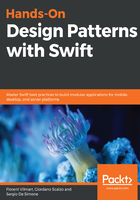
Exposing Swift to Objective-C
In order to expose Swift to Objective-C, Xcode will generate a header for you, which contains all Swift classes and modules that can be exposed to Objective-C. In Xcode, you can set the value of that header by controlling SWIFT_OBJC_INTERFACE_HEADER_NAME.
There are many reasons why a Swift class can't be exposed to Objective-C, including the following:
- Using types that don't directly bridge to Objective-C
- Using generics
- Using pure Swift structs and classes
SWIFT_OBJC_INTERFACE_HEADER_NAME is usually set to $(SWIFT_MODULE_NAME)-Swift.h at the project level, which is a good default and unlikely to conflict with any other header declaration. Most of the time, $(SWIFT_MODULE_NAME) will be the name of your app.
Whenever you need to import Swift code in your Objective-C implementation files use the following:
#import "MyProject-Swift.h"
This will properly import all of your Objective-C compatible declarations from Swift.
Now that we have properly bridged the two worlds of Swift and Objective-C, let's explore the interoperability layer with one of the most important features of Swift, nullability. In Objective-C, sending a message to nil or calling a method on a nil object has no effect, but it's unlikely that the developer on purpose left that in the code. Unlike Java, the program will not crash, nor raise an exception. In Swift, calling a method on a nil value results in a crash. As Objective-C can produce nil values, we need to reconcile these two worlds with nullability annotations.